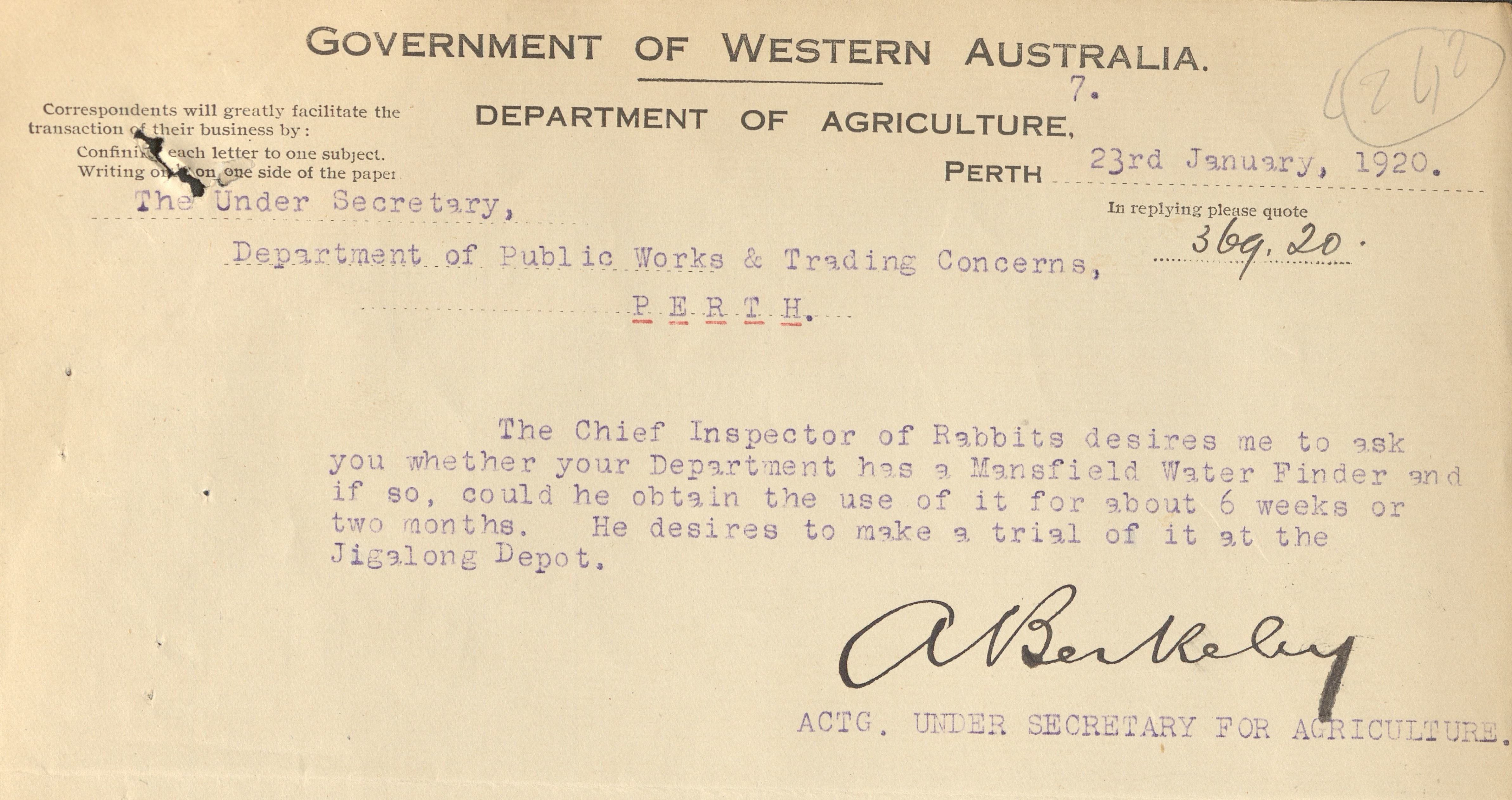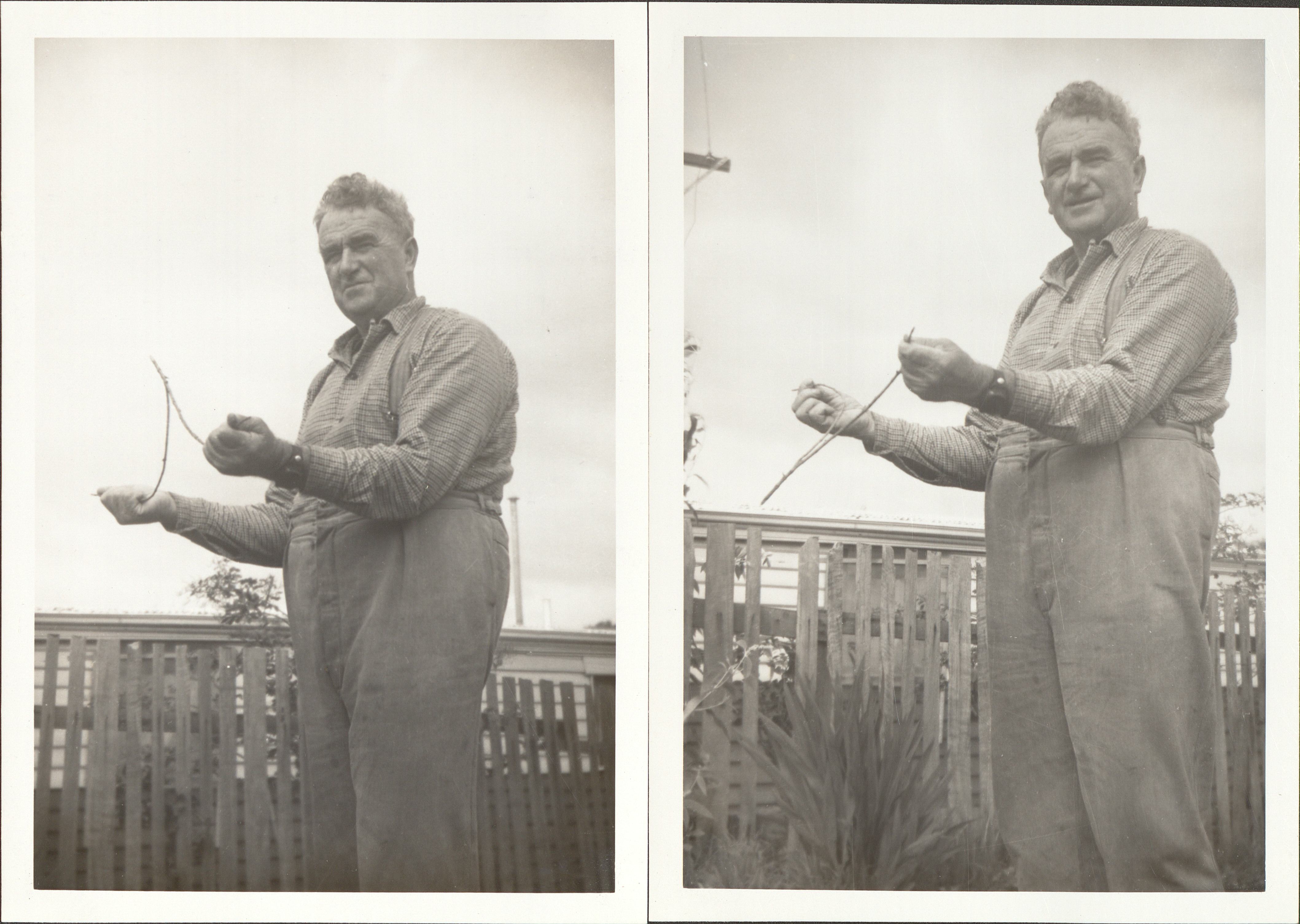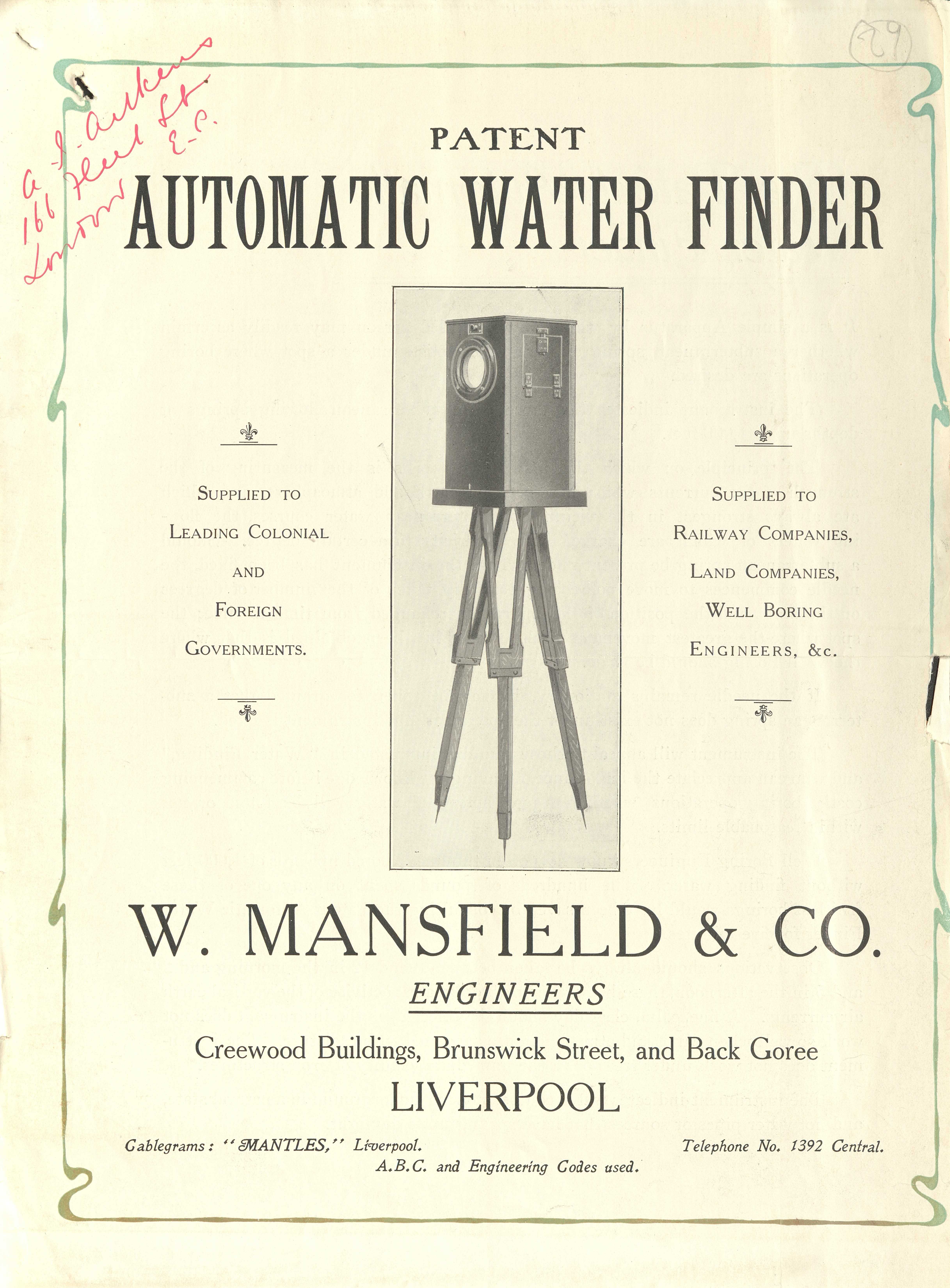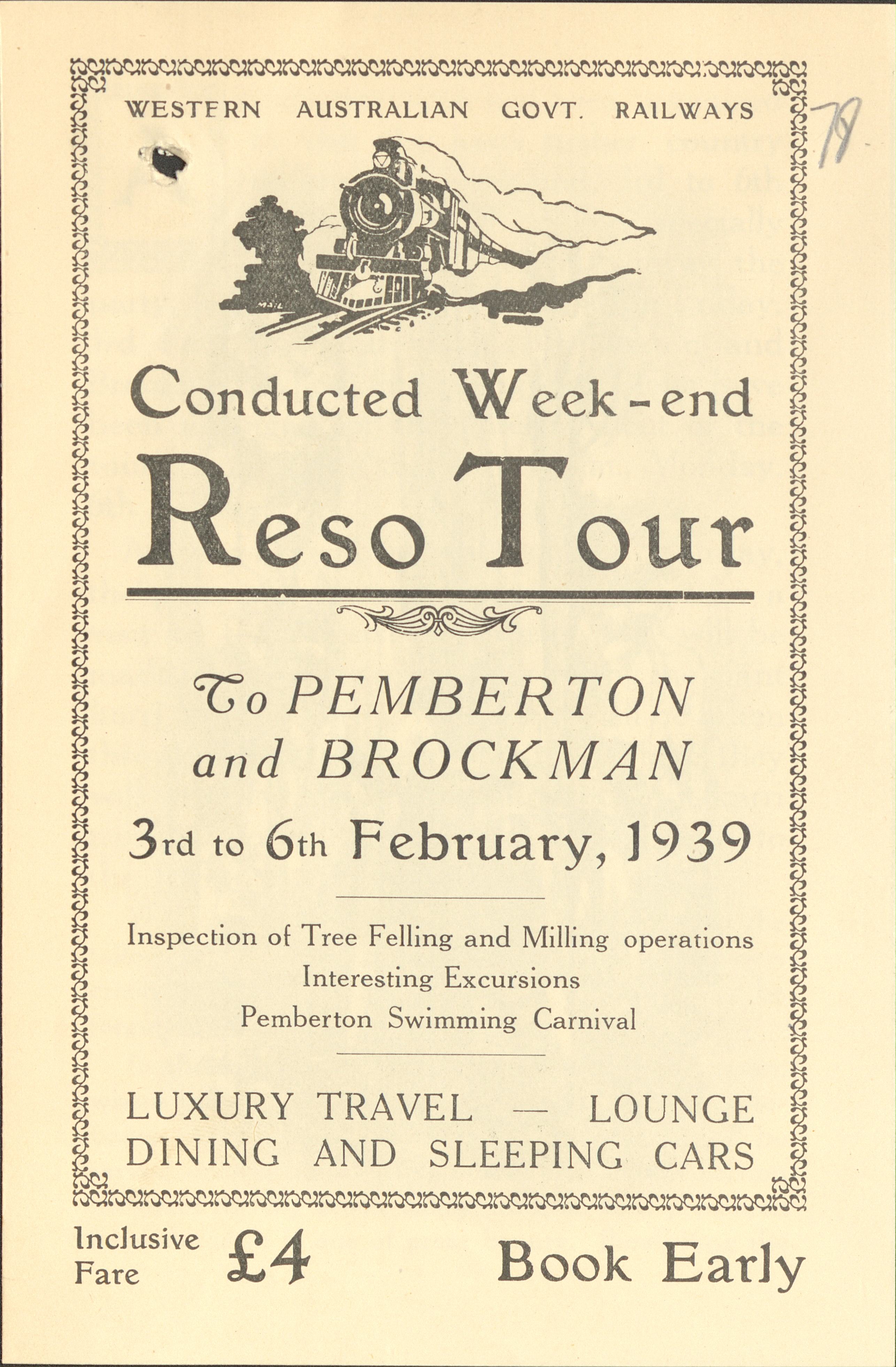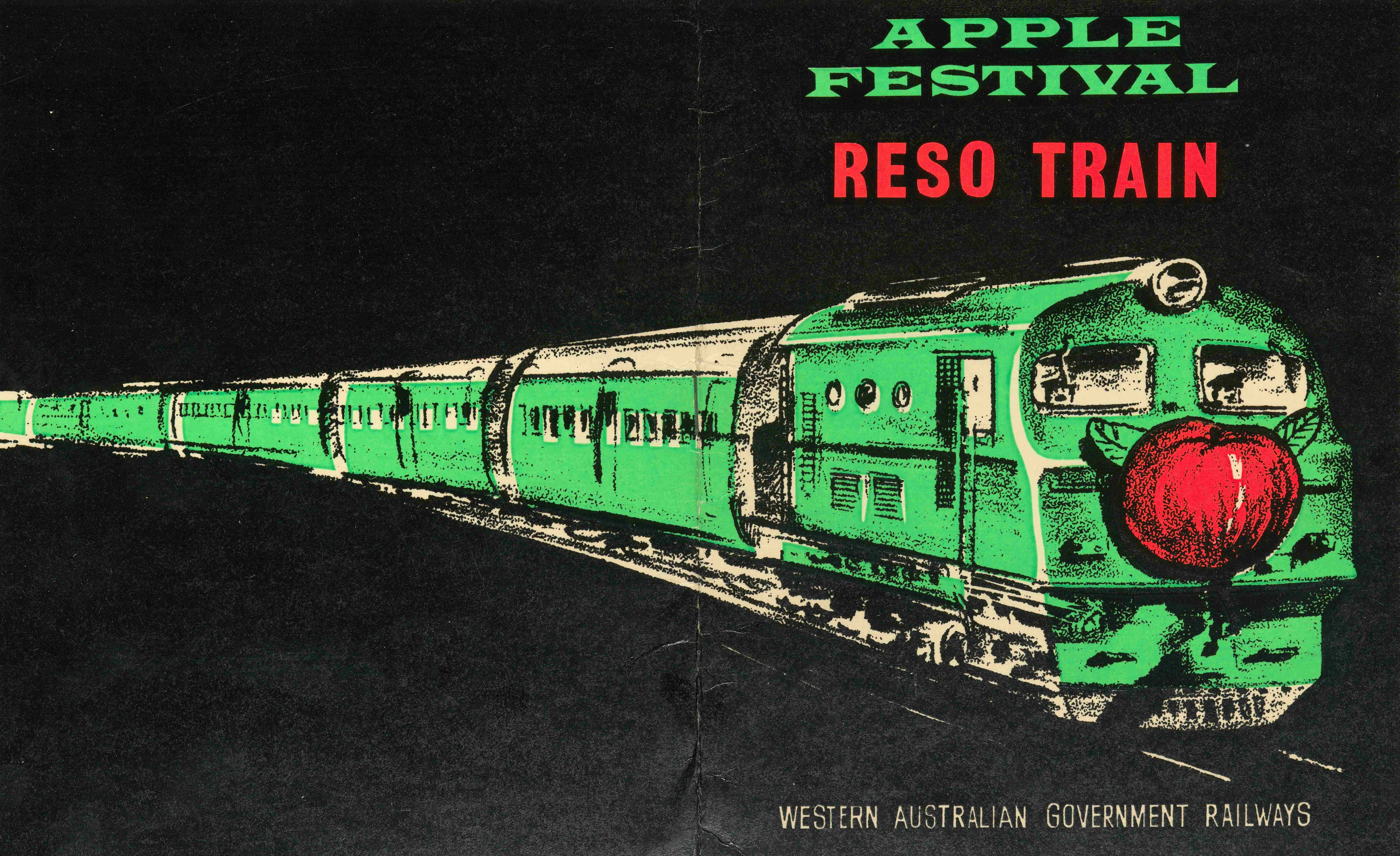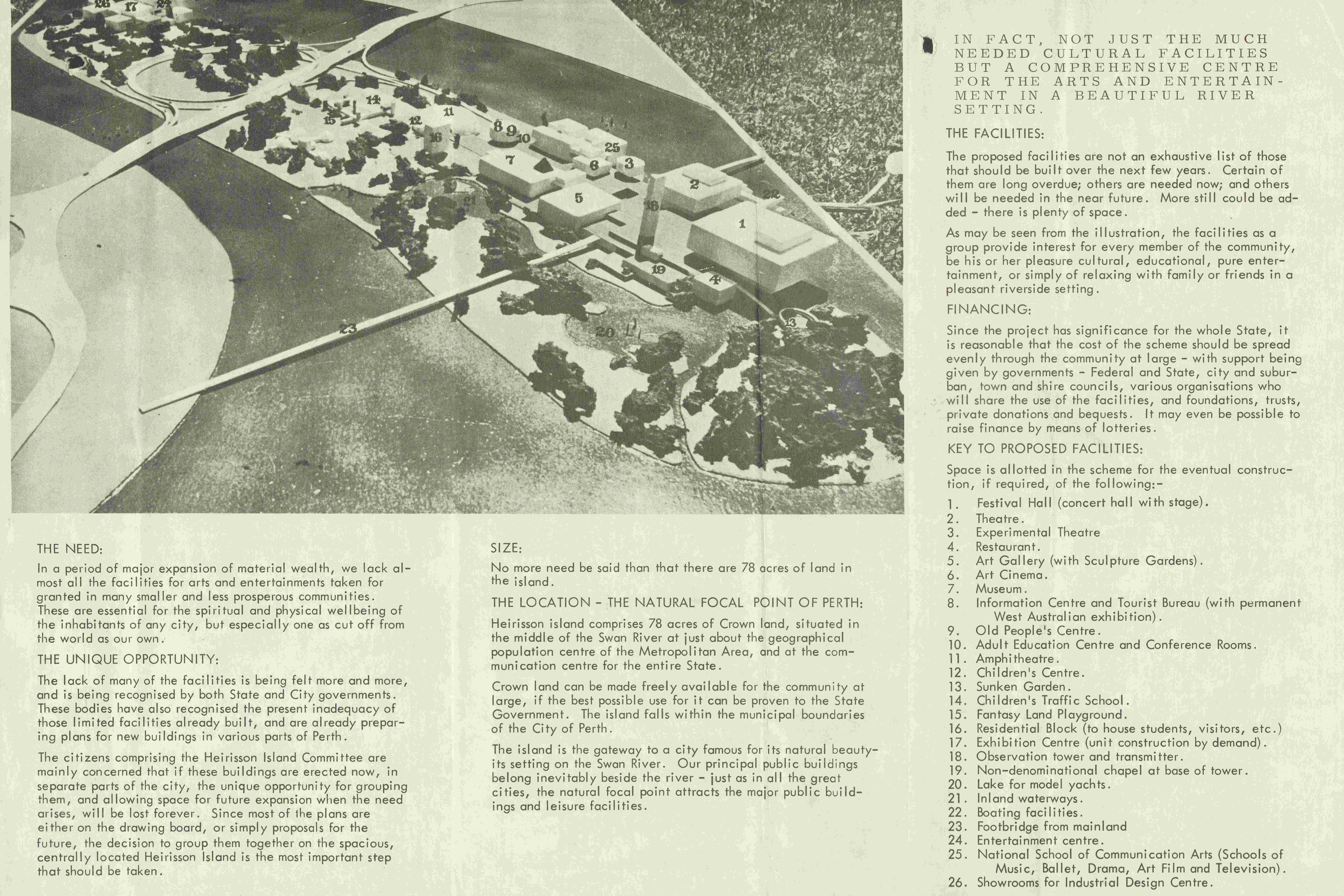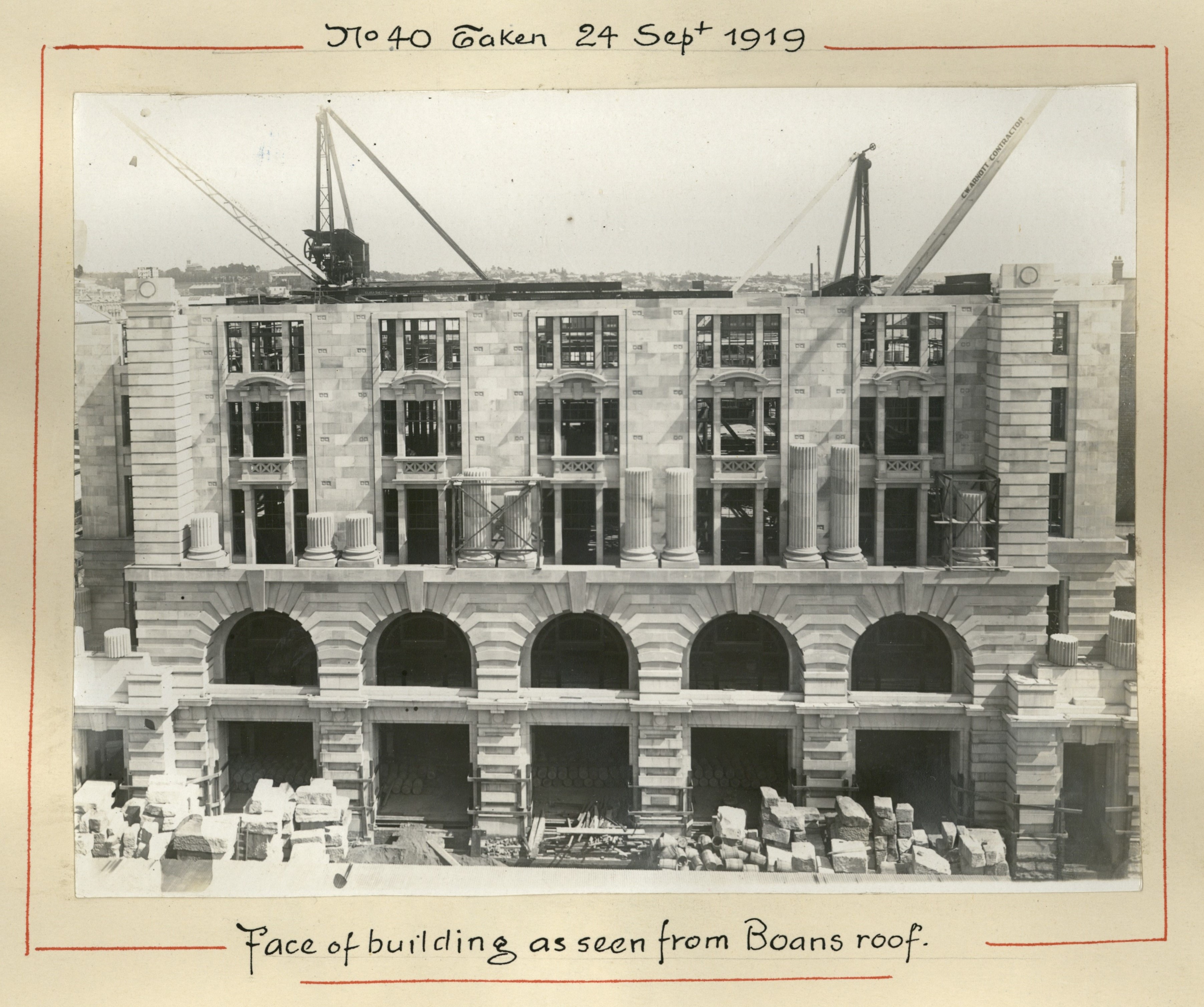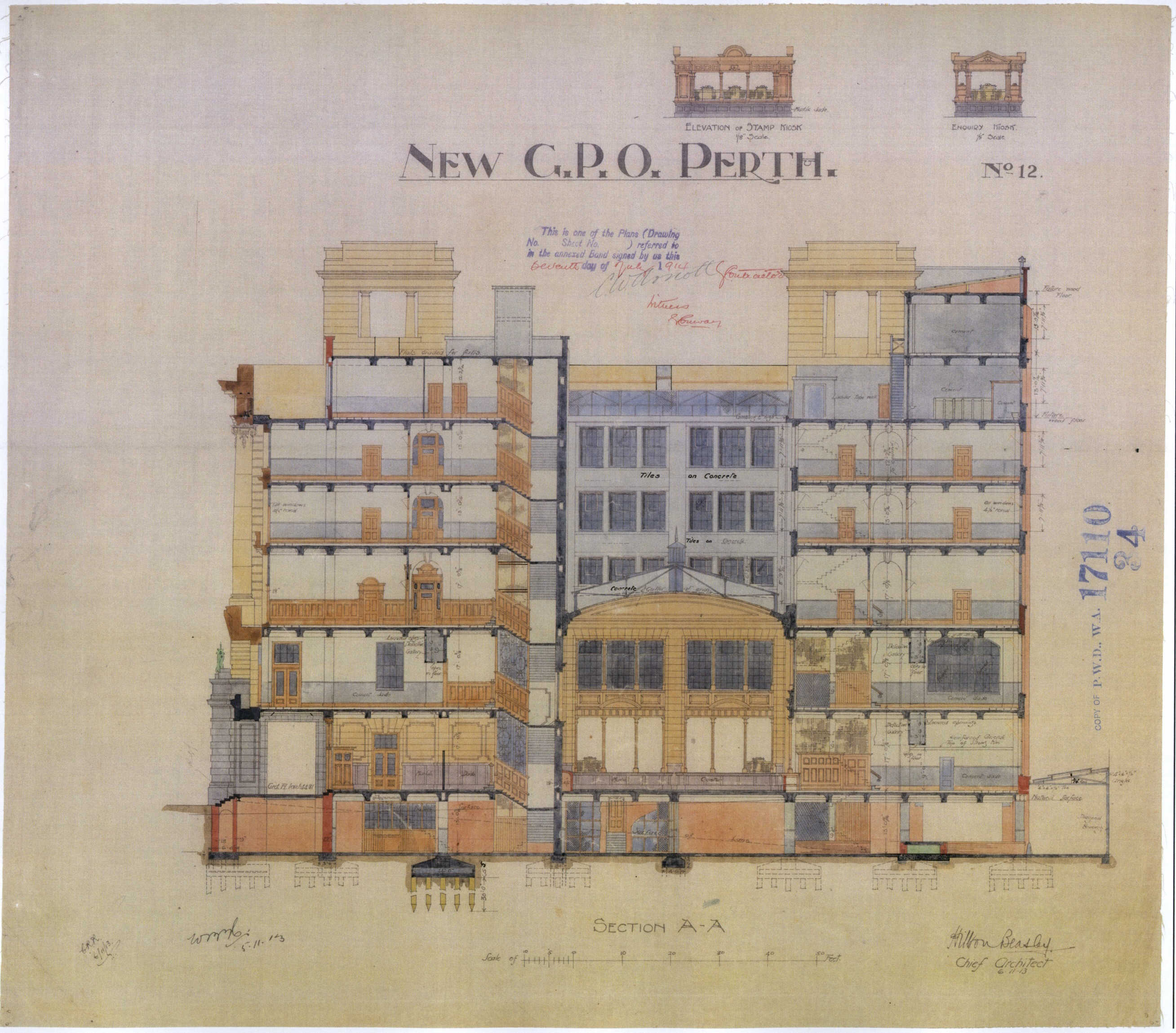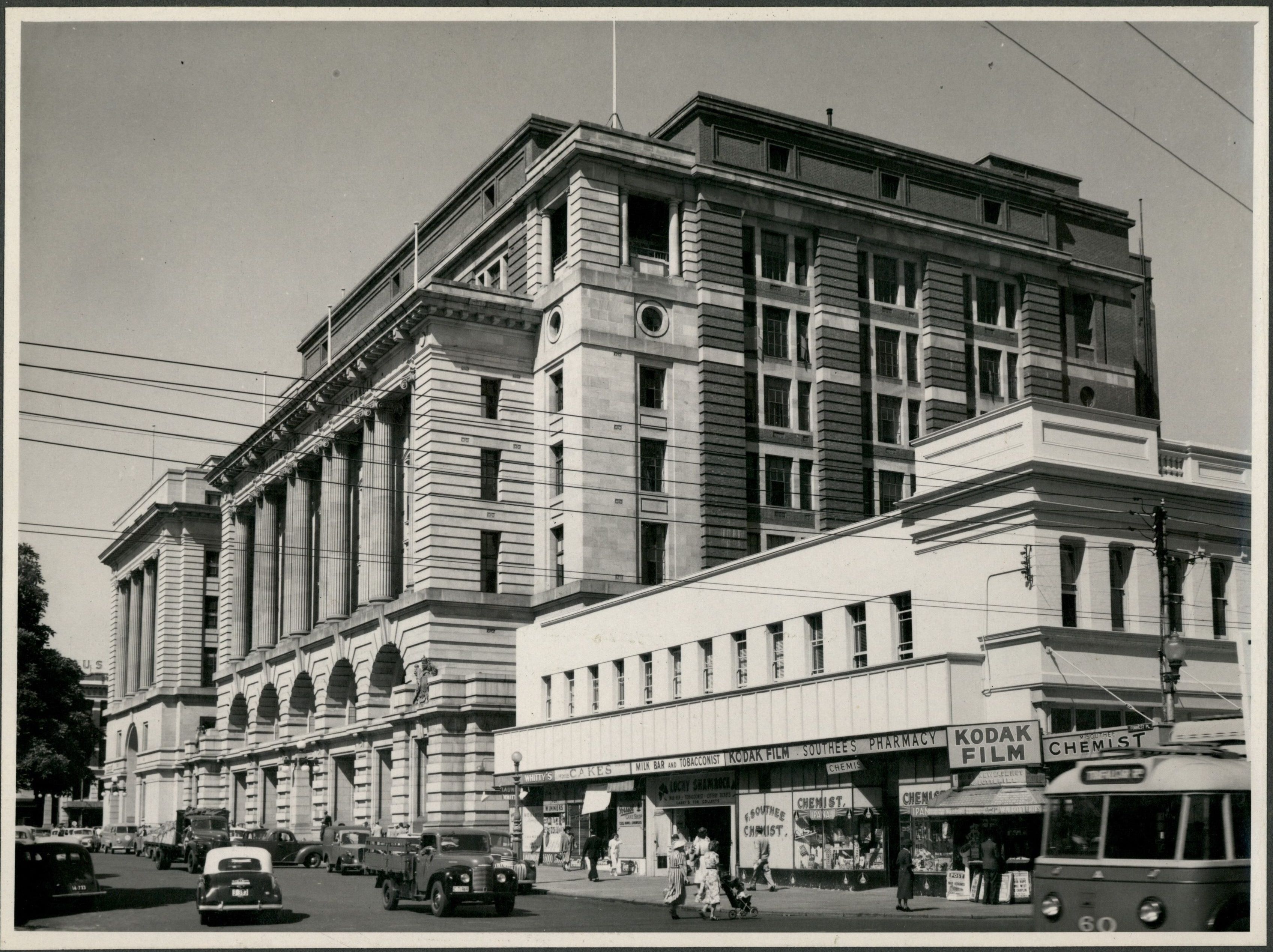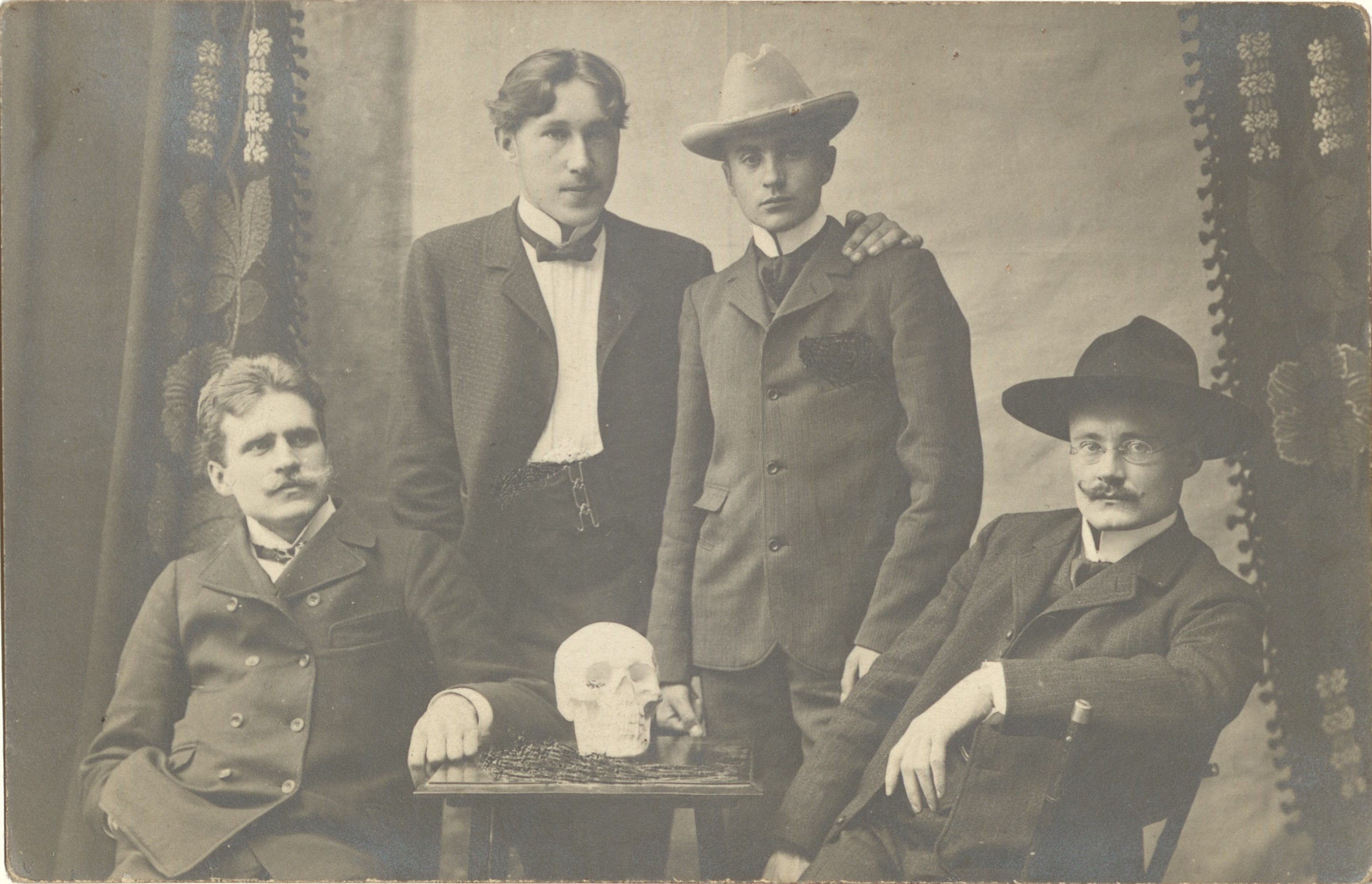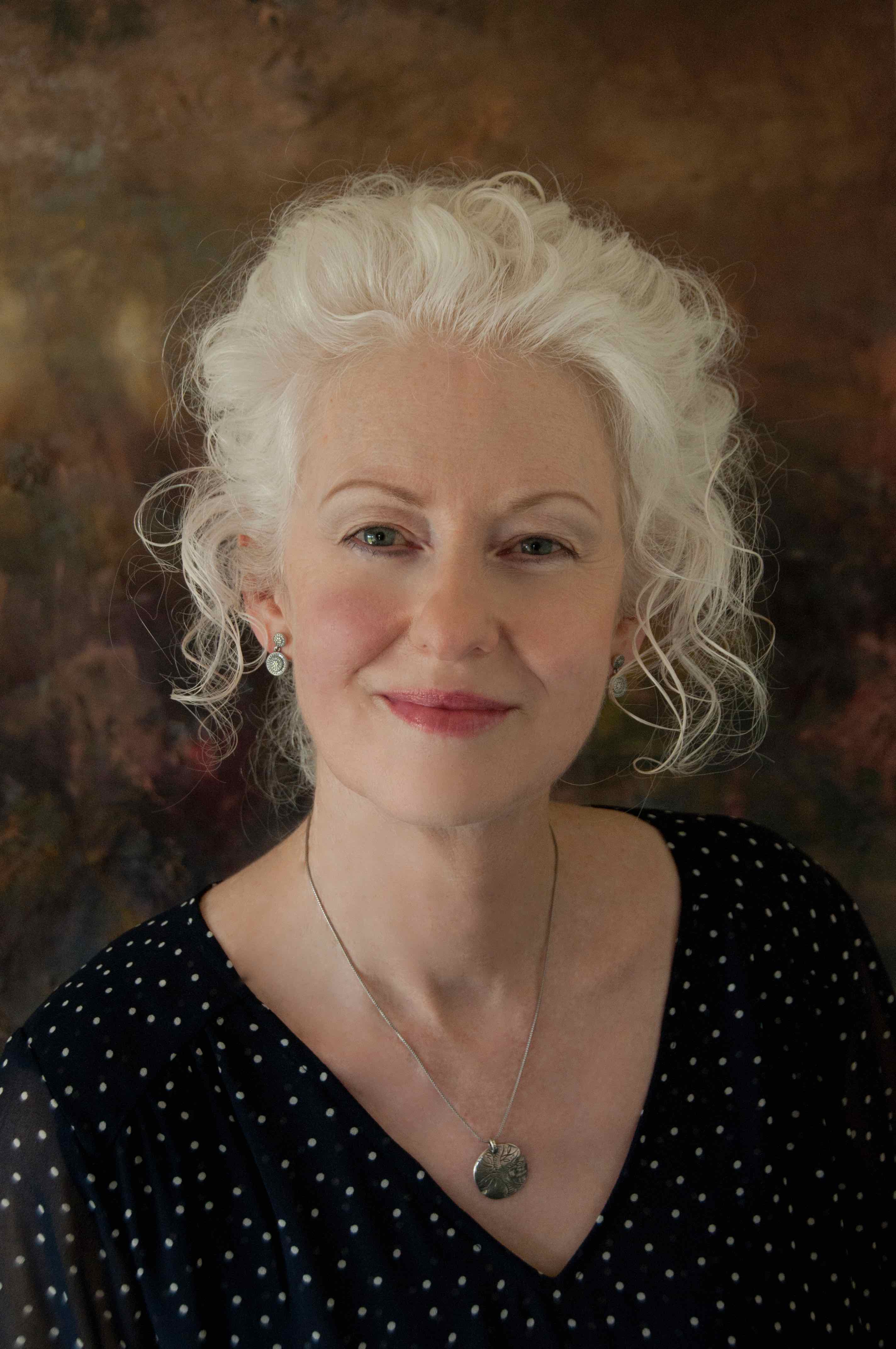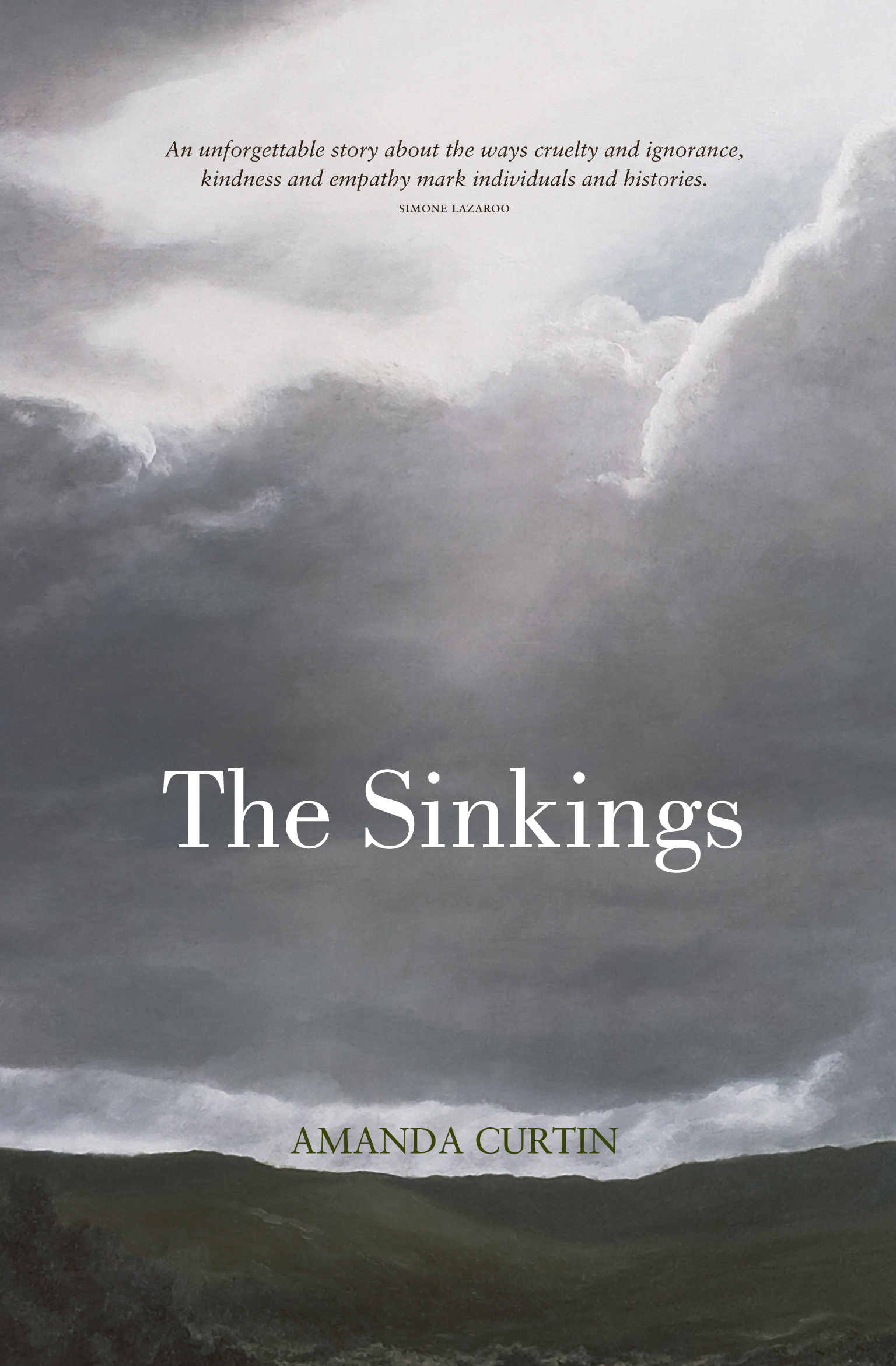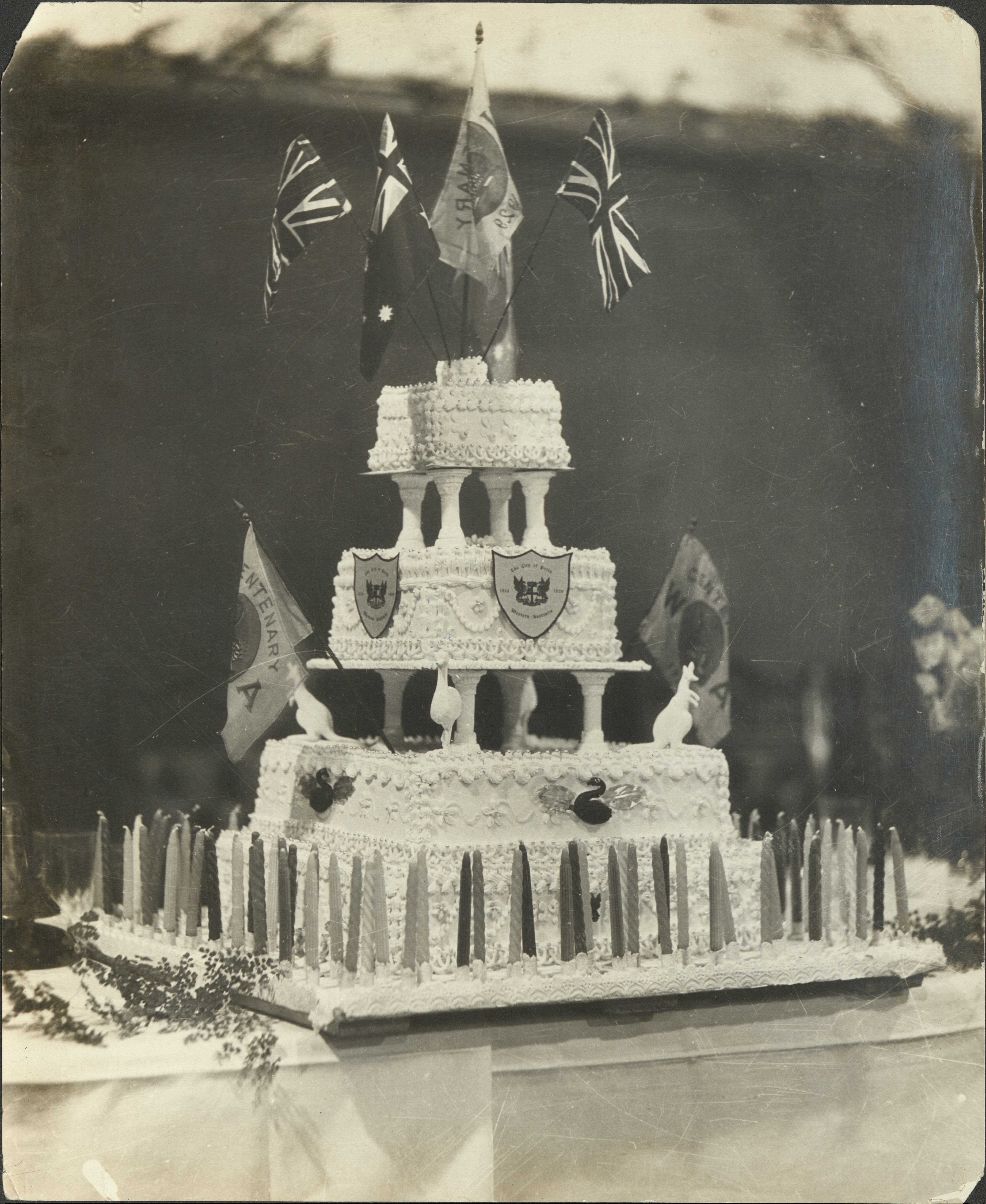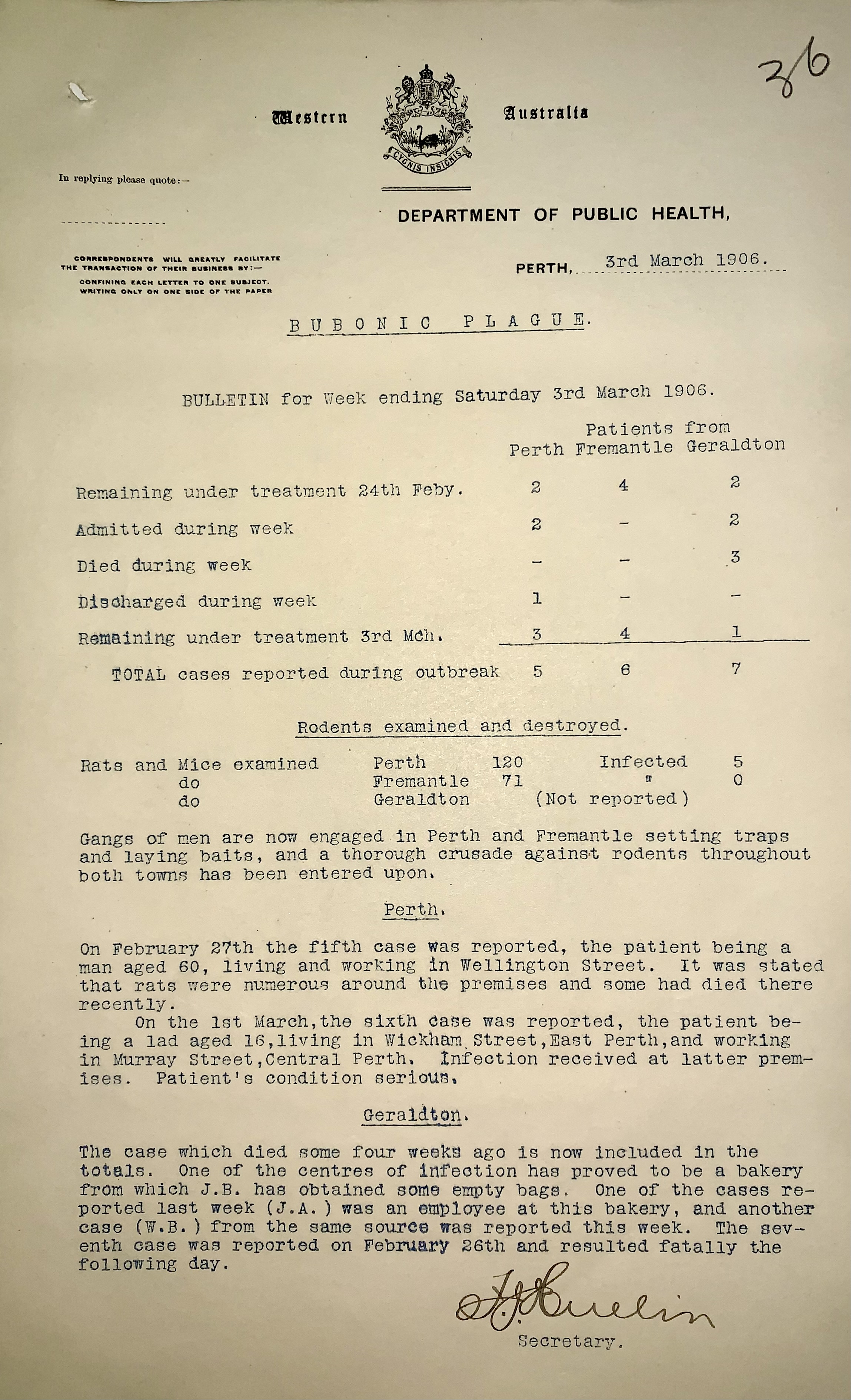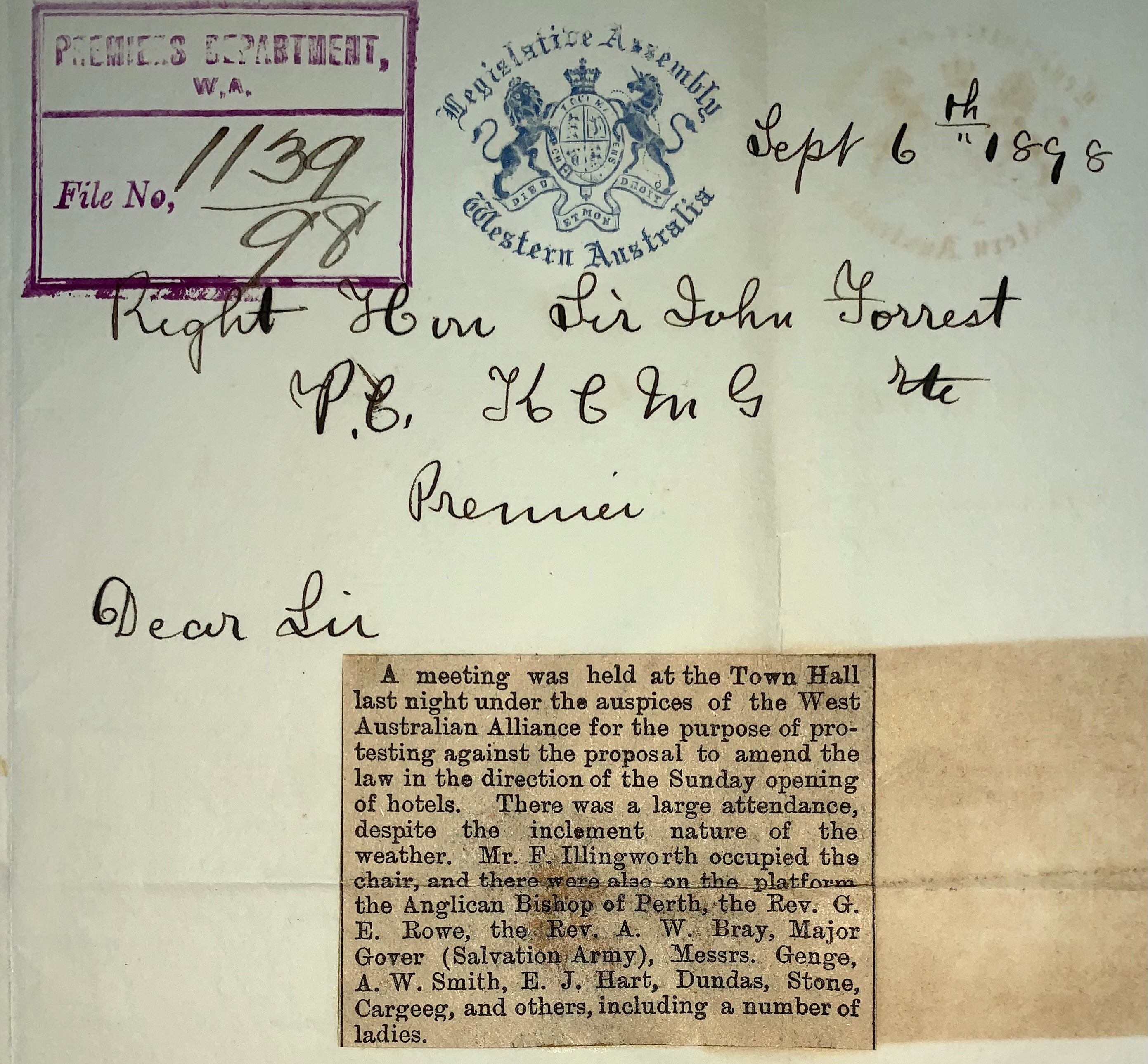The State Records Office has been a regular participant on ABC Radio's History Repeated segment (720 AM) and 6PR's Remember When segment. You can listen to some of our recorded stories here.
Water Divining in the Archives
Show moreIn this ABC radio episode, we look into the history of water divining in WA through the State Archives. We are also joined in this segment by experienced hydrogeologist Dr Ian Brandes who provides commentary on the practice of water divining and related matters. You can also read some of what was discussed on this radio session here: https://www.abc.net.au/news/2024-03-17/history-of-water-divining-in-western-australia/103567210
At one stage, during the 1920s when the Group Settlement and Soldier Settlement Schemes were established and there was an increased need to locate fresh water supplies for farming properties, the WA government engaged the services of water diviners for assistance.
References:
https://archive.sro.wa.gov.au/index.php/location-of-water-by-use-of-divining-rod-etc-1918-1056
https://archive.sro.wa.gov.au/index.php/miscellaneous-water-supplies-water-divining-1939-0165
https://archive.sro.wa.gov.au/index.php/the-divining-rod-1912-043
For more stories from the State Records Office, follow @staterecordsofficewa on Facebook and @StateRecordsWA on Twitter.
All Aboard the Reso Train
Show moreReso Tours were a very popular service operated by the WA Government Railways, taking passengers to different parts of the State by train. We delve into the topic on this ABC radio episode. You can also read some of what was discussed on this radio session here: https://www.abc.net.au/news/2024-02-18/history-on-wa-rail-holidays-reso-tours/103478670
For more stories from the State Records Office, follow @staterecordsofficewa on Facebook and @StateRecordsWA on Twitter.
A Look Back at Heirisson Island
Show moreThe Heirisson Island that exists now is very different to the original formation consisting of six main islands or mudflats. In this ABC episode, we look at the layered history of the island/s, focussing on some ambitious proposals from the 1950s/60s which did not come to fruition.
You can also read some of what was discussed on this radio session here: https://www.abc.net.au/news/2024-01-07/heirisson-island-matagarup-perth-/103248406
Research for this radio episode was based on many of the files held at the State Records Office relating to Heirisson Islands. To learn more about the importance of the area for Traditional Owners, see: https://gnarlaboodjamap.dlgsc.wa.gov.au/#/welcome
For more stories from the State Records Office, follow @staterecordsofficewa on Facebook and @StateRecordsWA on Twitter.
Unearthing WA's Climate History
Show moreIn this ABC radio episode, we are joined by special guest Dr Joelle Gergis from the Australian National University. While Joelle was in Perth researching historical meteorological records, we took the opportunity to invite her onto this radio session to discuss her research. Joelle is an internationally recognised and award-winning climate scientist and writer. She is a lead author on the United Nation's Intergovernmental Panel on Climate Change, is co-host of the podcast "Fear and Wonder" and is author of the books "Sunburnt Country - The History and Future of Climate Change in Australia" and "Humanity's Moment - A Climate Scientist's Case for Hope".
For more stories from the State Records Office, follow @staterecordsofficewa on Facebook and @StateRecordsWA on Twitter.
The America's Cup Win 40 Years On
Show more"Any boss who sacks anyone for not turning up today is a bum", Prime Minister Bob Hawke reacting after Australia II won the America's Cup on 26 September 1983.
We are joined for this ABC radio episode by special guest Fred Saunders from the WA Museum. Fred managed the Museum's exhibition "Australia II: 40 Years On" which celebrates this momentous sporting event.
For more stories from the State Records Office, follow @staterecordsofficewa on Facebook and @StateRecordsWA on Twitter.
100 Years of the Perth GPO
Show moreThe Perth GPO building celebrated the 100th anniversary of its opening on 26 September 2023. To mark the occasion, we were joined by special guest Senior Archival Officer Tarryn Lawrie from the National Archives of Australia for this ABC radio episode to talk about the history of the building.
You can read more about this here: https://www.abc.net.au/news/2023-09-17/perth-gpo-building-100-year-old-history/102852678
For more stories from the State Records Office, follow @staterecordsofficewa on Facebook and @StateRecordsWA on Twitter.
The Anarchist Scare of WA
Show moreWhat do Winston Churchill, Doris Day and Russian Anarchists have to do with the State Archives Collection? Listen in to this ABC radio episode to find out.
References:
- https://archive.sro.wa.gov.au/index.php/police-re-peter-jansen-1911-3911
- https://archive.sro.wa.gov.au/index.php/emigration-of-ernest-dredger-anarchist-scare-in-w-a-1-file-1230
- https://archive.sro.wa.gov.au/index.php/august-maren-and-peter-johnson-aka-janson-petition-for-compassionate-allowance-for-wrongful-arrest-allegedly-arising-from-peter-the-painter-article-in-the-perth-sunday-times-1911-5827
For more stories from the State Records Office, follow @staterecordsofficewa on Facebook and @StateRecordsWA on Twitter.
The East Perth Mulberry Plantation
Show moreIn the 1870s, the WA Colonial government embarked on a new silkworm industry for Western Australia. The establishment of this industry was prompted by market need, particularly with the European silkworm industry blighted by disease.
You can also read about the East Perth Mulberry Plantation here: https://www.abc.net.au/news/2023-05-05/east-perth-silkworm-industry-history-mulberry-way/102302214
For more stories from the State Records Office, follow @staterecordsofficewa on Facebook and @StateRecordsWA on Twitter.
The Sinkings
Show moreIn this ABC radio episode, we are joined by special guest and award-winning author Amanda Curtin. Amanda discusses how State archives have underpinned some of her writing, including for her 2008 book "The Sinkings".
"The Sinkings" centres around the story of former convict Little Jock, who was found murdered in 1882. But who was Little Jock, and how did Amanda happen across their story? Listen in to find out.
To learn more about Amanda's book "The Sinkings", see: https://amandacurtin.com/the-sinkings/
For more stories from the State Records Office, follow @staterecordsofficewa on Facebook and @StateRecordsWA on Twitter.
Bigamy in WA
Show moreIn this ABC radio episode, we are joined by special guest Melanie Methot, Professor of History at Canada's University of Alberta. During 2022-23, Melanie visited Australia conducting extended research into historical bigamy cases. While carrying out research at the State Records Office, Melanie kindly agreed to discuss her research on radio.
During this episode, Melanie focussed on the unusual case of Alexander Smart, who is charged with bigamy in 1910. But did Alexander confess to bigamy to cover up a more serious crime?
You can read more about the Alexander Smart case here: https://www.abc.net.au/news/2023-03-19/bigamy-studies-uncovers-attitude-to-marriage/102094956
For more stories from the State Records Office, follow @staterecordsofficewa on Facebook and @StateRecordsWA on Twitter.
The 1929 State Centenary
Show moreWho did we think we were? In this ABC radio episode, we travel back to the 1929 State Cententary to examine the ideas, thoughts and events that shaped 1929 - 100 years of European colonisation in WA.
Planning for the 1929 Centenary involved years of work with many groups and committees involved. Throughout the Centenary year, there were almost daily activities in Perth and in country towns.
But despite the military precision in which matters were planned, not all events in 1929 went smoothly. We look at two examples which took an unexpected course and where matters went awry. You can read more about this here: https://www.abc.net.au/news/2023-02-12/western-australias-grand-1929-centenary-celebrations-went-awry/101945884
References:
https://archive.sro.wa.gov.au/index.php/centenary-of-w-a-june-1929-general-file-1926-0639
https://archive.sro.wa.gov.au/index.php/publicity-group-committee-centenary-postage-stamp-1928-0096
For more stories from the State Records Office, follow @staterecordsofficewa on Facebook and @StateRecordsWA on Twitter.
Through Silent Country
Show moreIn this special ABC radio episode, we are joined by author Carolyn Wadley Dowley who talks about her archival research that forms the basis of her book Through Silent Country. Carolyn first began using State archives in the late 1990's, which led to working closely with Wangkatja Elders in the Goldfields. The first edition of Carolyn's book was published in 2000. In 2020, Carolyn began work on a second edition of her book incorporating new archival information.
For more stories from the State Records Office, follow @staterecordsofficewa on Facebook and @StateRecordsWA on Twitter.
Flight of the Diamonds
Show moreIn this ABC radio episode, we hear about a very dramatic part of our State history that few know about. It is also a story of tragedy, of live-saving rescue and a mystery that has never been solved. For this story, we are travelling back to WWII, when Australia seemed under serious threat following the bombing of Darwin and Broome. It's during this extraordinary time that this story unfolds.
Reference:
For more stories from the State Records Office, follow @staterecordsofficewa on Facebook and @StateRecordsWA on Twitter.
Eucla Telegraph Station
Show moreThe opening of the Eucla Telegraph Station in 1877 was a momentous event in our State history, connecting WA with the world. Prior to this, communication with the eastern states and internationally was reliant upon mail services and could be significantly delayed. The construction of the Eucla line from Albany was a remarkable feat in itself, taking only 4 years once an agreement was reached with South Australia. This agreement was vital as a telegraph line also need to be extended from Adelaide to Eucla. Messages from stations such as Perth would be transmitted to Eucla, then onto Adelaide, north to Darwin and then internationally via submarine cable. We explore all these matters in this ABC radio episode, and how isolated WA truly was before the Eucla station started operating.
For more stories from the State Records Office, follow @staterecordsofficewa on Facebook and @StateRecordsWA on Twitter.
Bubonic Plague in WA
Show moreHistorical records and our State archives reveal that we have lived through multiple health crises and epidemics since colonisation. In this special ABC radio episode, we are joined by Professional Historian Dr Michelle McKeough who has conducted extensive research into the bubonic plague which reached Western Australia in 1900. Dr McKeough talks about how WA got off relatively lightly in comparison to other parts of the world affected by the plague and the reasons for that. We also discuss the parallels with the Covid pandemic.
For more stories from the State Records Office, follow @staterecordsofficewa on Facebook and @StateRecordsWA on Twitter.
Laws and Regulations That No Longer Exist
Show moreOur State history is full of laws and regulations that no longer exist and which today we might think a bit strange. What was Evil Fame? Did men and women really have to swim in separate areas at our beaches? And was there really a law about where you could fly your kite? We examine these questions and more in this ABC radio episode, based on government records held in the State archives collection.
For more stories from the State Records Office, follow @staterecordsofficewa on Facebook and @StateRecordsWA on Twitter.
Early Suburbia
Show moreGovernment records show that many of our suburbs had less than salubrious beginnings, with questionable behaviour and minor crime being a common feature. Such behaviours were to force local Road Boards and Progress Associations to lobby government for establishing dedicated police stations. In this episode, we examine the issue focussing on suburbs along the Swan River.
For more stories from the State Records Office, follow @staterecordsofficewa on Facebook and @StateRecordsWA on Twitter.
In High Spirits
Show more"Pinch him, and burne him, and turne him about / Till Candles, and Star-light and Moon-shine be out." (A character in William Shakespeare's comedy The Merry Wives of Windsor, 1602)
The making of "moonshine" or illicit spirits receives the occasional mention in police reports in the 1800s although it is not until the goldrush of the 1890's that such reports increase, with the influx of immigrants from European countries that have a long history of making their own spirits. We explore this topic in this ABC radio episode, including that of an illicit still being discovered in 1932 just outside of Kalgoorlie.
For more stories from the State Records Office, follow @staterecordsofficewa on Facebook and @StateRecordsWA on Twitter.
Friendly Societies
Show moreOddfellows, Free Gardeners, the Ancient Order of Druids... Yes, we are talking about Friendly Societies. But what were Friendly Societies, how did they form and what ever happened to them? Tune into this ABC radio episode as we discuss these matters, based on the many records held in the State archives collection about the Friendly Societies.
For more stories from the State Records Office, follow @staterecordsofficewa on Facebook and @StateRecordsWA on Twitter.
Never on a Sunday
Show moreDo you remember a time when Sunday was truly a day of rest, often because everything was closed? Listen back to this ABC radio session as we discuss the history of Sunday restrictions and how even dancing was prohibited unless you had prior permission.
Restrictions around activities on a Sunday began to be enacted in 1833 with the Liquor Licensing Act 1833 prohibiting "spiritous or fermented liquors to be drank in, or conveyed out, his of her premises, during the usual hours of morning and afternoon Divine Service in the nearest church or chapel on Sunday..."
The Police Act 1892 introduced new Sunday restrictions for places of public entertainment and amusement. These new rules varied over time, but initially required those who wished to open such premises on a Sunday to seek government permission each time. For early movie theatres, this also required the owner to submit to government a list of the films to be shown, so that they could be scrutinised for their suitability (in an era before film classification). Later on, Sunday restrictions were to prove problematic for drive ins, which had to wait for sunset before a double feature could commence. During daylight savings trials, this meant that movies could run from Saturday night into the early hours of Sunday morning.
Activities such as dancing also got caught up in these new laws, with many police reports in the State archives collection documenting Sunday dances being shut down.
Provisions in the Police Act were superseded by the Sunday Entertainments Act 1979, which was only repealed in 2021. Retail trading hours were also changed in 2012, allowing metropolitan supermarkets to open on Sundays, albeit with reduced hours compared to other days of the week.
For more stories from the State Records Office, follow @staterecordsofficewa on Facebook and @StateRecordsWA on Twitter.
Welcome to Woop Woop
Show moreHave you ever been to Woop Woop, Hell's Hole or Pineapple? Listen in to this ABC radio episode as we explore some of the unusual and lost place names of Western Australia.
Prior to the 1930s, the naming of places in Western Australia could sometimes be a little haphazard, with the result that some places received unusual names. There really was a place called Cold and Wet outside of Denmark in the South-West. And Siberia (gazetted in 1914) in the eastern goldfields is a tongue and cheek reference to how hot that area can get.
This ad hoc approach also led to much duplication of names across Western Australia with the potential to cause confusion.
(Hell's Hole, just outside of Denmark on the SW coast, was renamed Somerset Hill in 1923. SROWA, cons 541, 1923/4501)
In 1936, a deputation from the WA Historical Society met with the Minister for Lands to express their concerns with the approach to date. This led to the formation of the Nomenclature Advisory Committee to provide expert guidance with the naming of towns, geographical features and bounded areas. From the outset, the Committee sought "to secure as far as possible suitable Aboriginal names for use in naming new features".
The work of this group is continued today by the Geographic Names Committee.
(Safety Bay was originally to be named Liverpool. SROWA, cons 3844/285)
For more stories from the State Records Office, follow @staterecordsofficewa on Facebook and @StateRecordsWA on Twitter.
"Characters"
Show moreThe State archives collection contains records and information about many West Australians from past times. In this ABC radio episode, we explore the lives of three West Australians who came to public attention for different reasons.
Henry Wilson
Henry ('Harry') Wilson was born c. 1847 on the island of Tobago, then British West Indies. He made his way to Singapore and eventually Western Australia as a ships hand, arriving in 1883. Tragedy was to fall upon Henry in two separate accidents. Nonetheless, his ability to support himself for 12 years following these accidents is nothing short of remarkable.
(Extract from Fremantle Prisoner Register, showing entry for Henry Wilson. SROWA, cons 4173/2)
Ellen Barlow
In the late 1920's, Mrs Ellen Barlow was frequently portrayed in the newspapers as being Western Australia's most vexatious litigant. Mrs Barlow sued many people including, at one stage, her own lawyer. In 1930, Parliament even passed the "Vexatious Proceedings Restriction Act" in an attempt to thwart Mrs Barlow's legal proceedings, even although such proceedings were typically unsuccessful.
(Mrs Ellen Barlow leaving the Supreme Court with unidentified man, 1930, SLWA, 048937PD)
Percy Button
Percy Button (sometimes known as Buttons) has a rightful claim for being Perth's first busker and would often perform acrobatic acts whenever a crowd gathered, such as outside theatres or sporting events. He was a well known Perth face and performed for several decades from the 1920s, before his death in 1954. There is a statue of Percy in Hay Street Mall outside of London Court that celebrates "the spirit of the street".
(A selection of photographs and records relating to Percy Button, SROWA)
For more stories from the State Records Office, follow @staterecordsofficewa on Facebook and @StateRecordsWA on Twitter.
Acts of Bravery
Show moreThe State archives collection includes many files that document acts of bravery and heroic actions in the saving of lives. In this ABC episode, we talk about five of these incidents which resulted in the recipient being formally recognised for the selfless acts they carried out.
References:
- https://archive.sro.wa.gov.au/index.php/honours-file-1946-0424-jones-j-r
- https://archive.sro.wa.gov.au/index.php/bravery-shown-by-miss-joan-morrissey-in-rescue-of-douglas-moses-from-well-at-anketell-station-sandstone-1943-1615
- https://archive.sro.wa.gov.au/index.php/beazley-kim-edward-re-courageous-and-successful-rescue-of-david-mill-from-electrocution-on-14-11-1956-at-the-municipal-park-claremont-1956-4656
- https://archive.sro.wa.gov.au/index.php/stacey-peter-garnett-recommendation-for-bravery-award-for-stopping-driverless-tractor-at-donnybrook-show-on-07-04-85-1985-0143
- https://archive.sro.wa.gov.au/index.php/rescue-of-five-adults-by-six-schoolboys-on-surfboards-at-bunbury-on-5-6-1967-1967-1454
For more stories from the State Records Office, follow @staterecordsofficewa on Facebook and @StateRecordsWA on Twitter.
The Bernie's Burgers Backstory
Show moreDid you ever have a burger and shake at Bernie's on Mounts Bay Road? Listen in to this ABC Radio interview, as we examine the Bernie's Burgers Backstory.
Bernie's opened for business on 6 January 1939 by Mr Bernard (Bernie) Hardwick and can claim to be one of Perth's first fast food establishments. At the time, what was served at Bernie's were called Finger Meals with crayfish rolls being the specialty. Hamburgers were quickly added to the menu, reputedly on the suggestion of American servicemen during WWII.
Prior to Bernie's, the land on which it was situated was used in the early 1900s by the Swan Brewery as a grazing area for the brewery's workhorse. The lot was then used as a Chinese market garden with further proposals made to government for how the area could be used.
Bernie's quickly proved successful. Mr Hardwick had architectural plans drawn up for a more permanent establishment to replace his mobile caravans which were first used for serving food from.
Mr Bernard Hardwick passed away in 1976 although his family continued the business.
The land on which Bernie's stood was leased from the State Garden's Board (later, the National Parks Authority) and by the early 1980s, successive State governments were considering selling this land. In 1994, Bernie's was forced to close and the land was sold to allow construction of the Mount Hospital.
See also this ABC article about the rise and fall of the much-loved Bernie's food establishment, part of of our Perth food history: https://www.abc.net.au/news/2021-08-21/bernies-perths-first-fast-food-hamburgers/100391842
References:
- https://archive.sro.wa.gov.au/index.php/bernies-lots-64-and-65-mounts-bay-road-part-of-kings-park-a1720-11-05
- https://archive.sro.wa.gov.au/index.php/national-parks-control-small-portion-kings-park-bernies-food-stall-verticordia-holdings-pty-ltd-hardwick-mk-014281f3201
- https://archive.sro.wa.gov.au/index.php/national-parks-control-small-portion-kings-park-bernies-food-stall-verticordia-holdings-pty-ltd-hardwick-mk-nq00550001-024095f3201
- https://archive.sro.wa.gov.au/index.php/geoffrey-richard-wilkins-office-of-industrial-relations-v-verticordia-holdings-pty-ltd-t-as-bernies-mounts-bay-road-breach-of-award-48-of-1978-1989-186
For more stories from the State Records Office, follow @staterecordsofficewa on Facebook and @StateRecordsWA on Twitter.
Messages for the Future
Show moreIn a sense, the State archives collection is all about messages for the future and messages from the past. Listen in to this ABC radio session as the State Records Office talks about some very specific examples.
Messages for the Future was a project in the year 2000 under the State government’s Millennium West initiative. People of Western Australia could submit, via a central government portal, messages for future generations. These messages were placed in a time capsule on display at The Bell Tower (The Bell Tower on the Swan River was also built as a Millennium West project). The messages are due to unveiled in the year 2100.
You can read the media statement from 2000 about Messages for the Future here: https://www.mediastatements.wa.gov.au/Pages/Court/2000/05/Messages-for-the-Future-a-once-in-a-century-opportunity-(audio).aspx
On a similar theme, the State Records Office also holds records of messages that have been found in bottles and even a message inscribed on a tin band and found fastened around the neck of an albatross at North Beach in 1887. Was this tin band a hoax, or was it a real message of distress from shipwrecked sailors seeking rescue?
References:
For more stories from the State Records Office, follow @staterecordsofficewa on Facebook and @StateRecordsWA on Twitter.
Buried Treasure at Dongara
Show moreIn 1656, the Dutch vessel Vergulde Draeck (Gilt Dragon) was wrecked off the Western Australian coast about 100km north of Perth. While some 188 lives were lost, 68 survivors are believed to have made it ashore, possibly carrying with them bullion which they buried near Dongara. The State Records Office looks into the Police file on the matter.
The wreck of the Gilt Dragon was found by divers in 1963 with, subsequently, silver bullion heavily looted until legislation was introduced to prevent such acts. However, the story of bullion also taken ashore by Dutch survivors in 1656 has persisted to this day.
In 1930, a former surveyor Alfred Burt communicated to the Police Commissioner how he found a strange ring of limestones in 1875 while surveying the country near Dongara. Burt enclosed a hand drawn map which indicated where he found the stones some 55 years previously.
The next year, 1931, two schoolboys were reported by the newspapers as finding some silver coins in the area which dated from the 1600s.
So commenced a treasure hunt in 1931 led by Dongara policeman Constable Loxton accompanied by an elderly Alfred Burt. The terrain around the area proved very difficult and with bad weather, the expedition was unsuccessful and called off after one week. A further expedition was mounted in 1932 which also proved unsuccessful.
Although Constable Loxton was keen to try again in 1933, it is clear there was growing skepticism about the matter and Constable Loxton's request for further investigation was denied.
However, that is not the end of the matter and there have been further expeditions to find the buried treasure since those times including in recent years.
Reference:
For more stories from the State Records Office, follow @staterecordsofficewa on Facebook and @StateRecordsWA on Twitter.
Lasseter's Reef
Show moreThe idea that there was a reef of unclaimed gold in central Australia, worth billions of dollars in today’s money, had an enduring mystery throughout the 20th Century. The story still fascinates today, with new books about “Lasseter’s Reef” continuing to be published which provide fresh historical insights.
The story of Lasseter’s Reef dates back to 1897, which is the year that Harold Lasseter (real name Lewis) claims he found the gold reef whilst travelling overland from Cairns to Kalgoorlie, getting lost on the way. The reef was, according to Lasseter, approximately 10 miles long, 12 feet wide and 4-7 feet high.
Lasseter was to claim he almost died on that journey but was rescued and, reluctantly, coerced by a surveyor three years later to find the reef again which he states he did.
However, this story of his incredible discovery was not reported at the time. It was told by Lasseter in 1930 to a party of interested individuals who, captivated by the tale and the prospect of undreamt wealth, established an expedition to locate Lasseter’s Reef. Things did not go at all well during that expedition.
There were a number of subsequent expeditions, but all failed to find Lasseter’s Reef.
The facts about Lasseter and his reef are today fairly well known, although it is a story that remains the stuff of legend.
References:
- https://archive.sro.wa.gov.au/index.php/lasseter-h-b-of-quot-lasseters-…
- https://archive.sro.wa.gov.au/index.php/central-australian-gold-explora…
- https://archive.sro.wa.gov.au/index.php/lasseters-reef-1970-3594-v1
- https://archive.sro.wa.gov.au/index.php/central-australian-gold-exp-cor…
For more stories from the State Records Office, follow @staterecordsofficewa on Facebook and @StateRecordsWA on Twitter.
Cottesloe Letters Scandal, 1928
Show moreIn this episode, the State Records Office looks into the Royal Commission held to investigate the ‘Cottesloe Letters Scandal’.
In 1928, a public scandal erupted in the local newspapers following anonymous, defamatory letters being placed in the residential letterbox of a Mrs Hull of Cottesloe. Mrs Hull’s neighbour Mrs Dillon was accused of writing the letters. Mrs Dillon was arrested, taken into custody and charged by police in September 1928. Overnight, her world had turned upside down.
The case appeared before the Perth Police Court with Mrs Dillon, being of modest financial means, forced to represent herself and conduct her own defense. The case was soon dropped owing to lack of evidence, but no apology was forthcoming to Mrs Dillon.
Not accepting that the matter had been resolved, Mrs Dillon lobbied for several months for there to be a Royal Commission into her wrongful arrest. The State government acceded to this request and Mr Justice Draper was appointed Royal Commissioner to investigate the matter. The Royal Commission sat in May 1929.
The finding of the Royal Commission reported that “she (Mrs Dillon) was not the writer of any of the obscene letters”. However, no criticism was made of police officers for Mrs Dillon’s wrongful arrest and this was a matter that was strongly criticized in the press at the time.
Mrs Dillon continued to press for a public apology and some form of compensation for what appeared to be a miscarriage of justice, but she never received satisfaction in this matter.
While it is now a rare event to hold a Royal Commission in Western Australia, this was not always the case. In the 1920s for example, there were on average over three Royal Commissions held each year. This is due to the nature of the Royal Commissions having a different focus in those times, as they could examine matters which had an administrative basis. In addition, there were also not separate government agencies in place that could investigate potential wrongdoing and malpractice. Some matters which in the 1920s resulted in a Royal Commission would now be dealt with by bodies such as the WA Ombudsman.
References:
- https://archive.sro.wa.gov.au/index.php/report-royal-commission-appointed-to-inquire-into-the-circumstances-surrounding-the-case-of-mrs-dillon-1
- https://archive.sro.wa.gov.au/index.php/royal-commission-case-of-crown-v-mrs-v-dillon-1929-0033
- https://archive.sro.wa.gov.au/index.php/1-dillon-venetia-gladys-committed-for-trial-on-charge-of-publishing-defamatory-matter-2-complaint-re-actions-of-the-police-in-connection-with-1928-7482
For more stories from the State Records Office, follow @staterecordsofficewa on Facebook and @StateRecordsWA on Twitter.
What We Ate
Show moreA surprising find in the State archives collection are historical menus from decades past, of which there are many examples. These menus typically relate to events organised by the State government, such as special celebrations and Royal banquets. However, we can also gain insight into "what we ate" from a historical perspective from items such as prison and poor house menus.
Historical menus show that what was served at State luncheons and dinners was pretty traditional fare up until the 1970s/80s. Our eating habits have changed considerably in recent decades, particularly with the influence of cuisines from different cultures.
In 1927, a State luncheon consisted of a clear soup, baked snapper, cold garnished lamb cutlets, roast turkey and ham, and iced asparagus. By comparison, the menu for Margaret Thatcher's State visit in 1988 shows far more sophistication with medallions of marron and mango with a basil vinaigrette, roast fillet of veal filled with a duxelle of chicken and mushroom, seasonal vegetables and a kiwi sherbet in a tulip accompanied by tropical fruits.
In 2011, the State Records Office delved into historical menus to host a special Eating the Archives event. Historical menus were re-created in a modern context.
For more stories from the State Records Office, follow @staterecordsofficewa on Facebook and @StateRecordsWA on Twitter.
Bob Hawke's School Record
Show more“Mediocre results are not to his credit. He lacks the serious and steady application indispensable for his future success”. Comments on Bob Hawke’s school record provides surprising insights into the academic performance of our former Prime Minister.
The State Records Office talks about Mr Hawke’s student record and why school records are important State archives.
Bob Hawke attended high school at Perth Modern between 1942 and 1946 before being going on to study Law and Arts at the University of WA. The State Records Office holds many records from government primary and high schools including the student cards for Perth Modern for students who attended the school up until the mid-1960s. These cards are unusually detailed, providing insight not only into academic performance but also a student’s character.
Throughout his time at Perth Modern it seems Mr Hawke’s academic performance was, as the card states, “borderline”:
- “Results patchy and below average” (1942);
- “Seems irresponsible re his progress and inclined to be a nuisance in class” (1942);
- “He does not always make a full effort and is anxious to distract others” (1944)
- “Robert’s mediocre results are not to his credit” (1945).
The card notes that Mr Hawke’s desired profession was “Medicine”, that he was injured after being hit in the head with a cricket bat during sport and that he was involved in a number of pranks at school such as drawing a moustache on a fellow student’s face during class (perhaps an indication of Hawke’s larrikin nature).
School records provide evidence of a student attending a specific school which can be useful for many purposes: confirming attendance and residency in WA, for identifying students who attended specific years for subsequent school re-unions, through to family history research.
Records the State Records Office holds from government schools are listed via the name of the school on our catalogue.
Reference:
For more stories from the State Records Office, follow @staterecordsofficewa on Facebook and @StateRecordsWA on Twitter.
Bayswater International Latitude Station
Show moreIn November 1905 a young scientist travelled to Perth from Bremen, Germany to undertake research of international significance in suburban Bayswater. The State Records Office picks up the story based on the government files held in the State archives collection.
As the earth rotates on its axis, it actually wobbles. An international program to measure the degree of wobble was established in the late 1890s using observatories known as International Latitude Stations. Night-time measurements were made using stars as set points, with Latitude Stations set up across the northern hemisphere. Only two such stations were known to be established below the Equator: one in Argentina, the other in Bayswater, Perth.
The reasons why Bayswater was chosen as the site of a Latitude Station are not fully known, other than being at good elevation and the right latitude. Land at the corner of Hamilton and Station streets was selected on which a small observatory was built. Dr Kurt Hessen, second assistant at the Berlin Observatory, commenced his night-time observations of the stars using a Zenith telescope on 6 January 1906. Dr Hessen continued this work for three years and the data he compiled was sent back to Berlin for computation with measurements taken at other Latitude Stations.
Dr Hessen was well known and highly regarded in Perth’s scientific community and soon gained many new friends. However, the day before he was due to return to Germany in February 1909, Dr Hessen went to Lake Monger and shot himself in the head with a revolver. Amazingly, Dr Hessen survived this tragic event and, although in intense pain, could convey what he had just done to a groundman who came to his aid. Dr Hessen, just 27 years of age at the time of this event, recuperated for several months in Perth before sailing back to Europe where he continued scientific work. Dr Hessen died after a short illness at the relatively young age of 49.
The reasons for Dr Hessen’s actions at Lake Monger remain a complete mystery. However, the work he conducted at Bayswater - as well as the wider work conducted at other International Latitude Stations - remains of practical value and scientific importance to this day.
Reference:
For more stories from the State Records Office, follow @staterecordsofficewa on Facebook and @StateRecordsWA on Twitter.
Russian Spies
Show more“Lungeous lauthanum Russian innermost sanctitude islander…” *
In March 1885, the Colonial Secretary of WA received a coded, top-secret telegram warning of impending war with Russia. The State Records Office looks into the matter and how Russian spies had been sent to WA in preparation for hostilities.
The State Records Office holds a number of government files relating to what was perceived as a looming war between Russia and British Empire in early 1885. The thought of war was triggered by Russia’s incursions into eastern Afghanistan, bordering with what was then India under control of the British Raj.
Curiously, Albany was seen as a point of possible conflict and the Albany Resident Magistrate was instructed to report immediately any Russian Ships of War in or near its waters. As was reported by the Inspecting Field Officer at Perth to the Colonial Secretary, Albany was considered “the point most liable to attack and of the greatest strategical value to the Empire generally”. Albany was also perceived as a location that was completely undefended.
Only several years earlier, a Russian warship was seen making soundings of Princess Royal Harbour as well as crewmen making sketches from the shore for purposes unknown.
In parallel with these concerns, the Albany Police Inspector reported to his superiors that three suspected Russian spies disembarked at Albany on 25 March 1885 after travelling from Bombay and that after staying several nights, then walked overland to Perth arriving on 8th April. They were described as having an exceedingly foreign appearance, were well educated and had a good supply of money. Those who the police interviewed said the Russians had indicated they came to the Colony to gain experience in sheep farming. They were reported as interested in obtaining maps of the Colony. The men were kept under observation by police until they departed by vessel to Gascoyne on 23 April.
In Perth, planning was carried out to put WA on a war footing with 353 men identified from the Volunteer Force to be made ready for active service. Rottnest Island was put on alert and a system of signaling between Rottnest and Fremantle was agreed to if “suspicious looking steam vessels” were spotted off the coast. In such an event, coal and wood stored at the Fremantle Railway Station was to be destroyed at once and buoys marking submerged rocks near Fremantle were to be removed.
Internationally, tensions between Russia and Britain soon eased and war was averted.
* Translated as: “Any information you may obtain regarding Russian man of war is to be immediately telegraphed to this office…”
References:
- https://archive.sro.wa.gov.au/index.php/his-excellency-the-administrator-russian-ships-of-war-code-telegram-from-admiral-tryon-regarding-1885-1088
- https://archive.sro.wa.gov.au/index.php/from-the-government-resident-albany-re-suspected-russian-spies-3-folios-1885-c14
For more stories from the State Records Office, follow @staterecordsofficewa on Facebook and @StateRecordsWA on Twitter.
The Meckering Earthquake
Show more“I thought the ground was going to open up and that I would fall into it … it was horrifying” (resident of Meckering, reporting his experience of the earthquake to The West Australian, 15 October 1968).
The earthquake that shook the wheatbelt town of Meckering on 14 October 1968 was a terrifying event for those that experienced it and remains deeply etched in the memories of many 52 years after the event. In this episode, the State Records Office, looks back to this event and what the government archives reveal about this natural disaster.
Between 1900 and 1968, the government files record six severe earthquakes in Western Australia at different locations throughout the State, although newspaper accounts record additional tremors throughout the 20th Century. An earthquake offshore of Carnarvon in November 1906 is considered the largest known Australian earthquake, measuring a magnitude of over 7 on the Richter scale, and could be felt as far away as Albany.
Slight ground tremors were felt in Meckering early in the morning of 14 October 1968 and then just before 11am, there was a severe earthquake that lasted about 40 seconds. Many of the buildings in Meckering, a town that had a population of 600 people, were reduced to rubble with other properties made structurally unsound. Nearby country towns were also affected with extensive damage and cracking sustained in buildings. Twenty people were injured as a result of the earthquake but there was no loss of life.
The effect of the earthquake was also felt in Perth with cracks appearing in many older buildings (newer buildings suffered little damage). Newspaper accounts of the time reported in sensational manner “tall buildings shook, masonry fell into the street and people fled in terror.”
Meckering soon became a place for sightseers, with people travelling to the town to view the damage caused. While initially, outside sightseers were considered a nuisance, enterprising local groups in Meckering began charging visitors ($1/vehicle) with support from the local police and this helped raise funds for rebuilding efforts. While initially it was thought that Meckering may need to be abandoned altogether, the townsite was partially rebuilt and remains a tourist attraction to this day.
References:
For more stories from the State Records Office, follow @staterecordsofficewa on Facebook and @StateRecordsWA on Twitter.
The 1962 Fly Menace
Show moreThis episode from the State Records Office discusses the steps taken by the State government in 1962 to ensure the Empire Games held in Perth in that year were a “no fly zone". In the lead up to the Games, house flies and bush flies were considered a potential nuisance for athletes and those attending the Games, as well as a source of embarrassment with Perth being placed on the world stage (the Empire Games were opened by Prince Philip). The State archives document the actions taken by government to address what was referred to in Parliament as the fly menace.
The government records show that metropolitan mosquito and fly control dates back at least as far as the 1930s, with extensive spraying and fogging programs carried out by local government along the Swan River. By 1956, a government ‘Fly Control Committee’ had been formed, chaired by the Public Health Department. The work of this committee was largely educational, with successful public campaigns to reduce fly numbers being run for several decades.
In 1962, the State government gave considerable thought and energy to fly and mosquito control for the Empire Games. A new Committee for fly control was established to consider different methods to combat fly populations, including aerial spraying over the Perth metropolitan area. The Commissioner of Public Health wrote to the US Department of Agriculture to seek advice on aerial fly control using insecticides. This method of fly control was quickly abandoned after it was determined that aircraft dispensing such sprays would need to fly at very low heights over the metropolitan area and would pose a potential danger. Other methods of control were used instead.
By October 1962, the Minister for Health could confidently report in Parliament the range of measures being undertaken, including:
- educating householders and Shire Councils "through a movie film, leaflets, exhibitions, lectures and radio talk";
- training selected government personnel in methods of fly control (including) up to 100 auxiliary Fly Control Officers;
- monitoring and control of flies in public parks and gardens, market gardens, abattoirs and stables; and
- using a fogging machine to provide more targeted applications of insecticide.
The subsequent report of the Committee at the conclusion of the Games records the successful outcome of these measures: "control was achieved and the prevalence of flies did not reach nuisance levels". The report notes that the only problem was at the Dalkeith Bowls where "bush flies were a nuisance on certain days despite the measures taken".
The Special Committee was disbanded soon after the Games concluded but the Metropolitan Fly Control Committee continued its work into the 1980s.
References:
- https://archive.sro.wa.gov.au/index.php/fly-control-empire-games-arrangements-1962-1144
- https://archive.sro.wa.gov.au/index.php/fly-control-campaign-organization-1961-0955
For more stories from the State Records Office, follow @staterecordsofficewa on Facebook and @StateRecordsWA on Twitter.
Convict Slang
Show moreIn this ABC segment, the State Records Office talks about a secret language used by convicts that allowed them to converse without authorities understanding what they were saying. Convict slang – or 'flash' language as it was known – was imported by convicts arriving into Western Australia during the mid-1800s. Incredibly, one of the early Police Occurrence Books from York held in the State archives collection records this secret language in detail.
The main purpose of Police Occurrence Books was for the police officer in charge of a station to record the daily events in that area. One of the York Occurrence Books (1860-1863) records matters such as local incidents (e.g. locals who were “drunk and fighting after hours”), warrants of arrest that were issued and memos of who had arrived into town. In 1862, the York journal breaks off its daily entries and over the next 13 pages provides a detailed inventory of flash terms and how such terms might be constructed in sentences.
According to this account of flash terms, “family men” meant thieves, “snaggling” meant catching geese by bait and hook, “blue ruin” meant gin and a “crib” referred to a house.
Whole phrases such as “Dear Dick, I have seen the swag chovey bloak who christened the yacks quick. I gave him a double finnip. I am now on the shallow” are translated in the journal to mean “Dear Richard, I have seen the person who bought the watches and he altered the names in them immediately. I gave him a ten pound note for doing it. I am now going half naked to avoid suspicion”.
The circumstance in which this language was recorded in the York journal remains unknown. In 1812, “A vocabulary of the flash language” was written and subsequently published in New South Wales. It was initially thought the York journal was a handwritten copy of the published dictionary, but this does not appear correct. Many of the terms are different, and there are terms used in the York journal which post-date 1812. For example, the York journal records “a treadmill” as being known rather more poetically in flash language as “an everlasting staircase”. The treadmill, used as a punishment device for convicts as well as to grind grain, was not invented until 1818.
Convicts were transported to Western Australia between 1850 and 1868 and provided labor for capital works projects, such as in building the Perth Town Hall and Government House. For many decades our convict history was considered a stain on our past and because of this, the official records of the convict establishment were almost destroyed in the early 1900s. Fortunately, the records escaped destruction and now form a critical resource held at the State Records Office (digital copies of convict records are also available on Ancestry’s website). The records are so significant that they were inscribed in UNESCO’s Memory of the World Register in 2007.
Reference:
- SROWA, Consignment 1141, Item 2
For more stories from the State Records Office, follow @staterecordsofficewa on Facebook and @StateRecordsWA on Twitter.
Banned Bumper Stickers
Show moreIn this ABC segment, the State Records Office discusses something a bit unexpected from the State archives collection: banned bumper stickers. These stickers used to be vetted by the WA Censorship Office.
It would seem that the matter of censorship was not something that troubled government officials during the 1800s. In June 1917, the Perth Censorship Office that was attached to the Australian Military Forces wrote to Dr Battye to request several books be removed from the public library shelves during a time of war. The books included “Prison Memoirs of an Anarchist”, the “Selected Works of Voltairine de Cleyre” (a female Anarchist) and “Anarchism and Other Essays”. This request may have been prompted by general unease following the 1917 revolutions in Russia.
Following World War II, films were to receive special attention for censorship in Western Australia and legislation was introduced in 1947 to control movies and advertisements that could be publicly shown. Stage shows and art exhibitions were later to receive special attention for censorship purposes.
In Western Australia, government censorship was overseen by the Attorney General with a Censorship Office responsible for operational matters. Legislation for “Indecent Publications” can be traced back to 1902 although this Act did not seem to provide a definition as to what would be considered “indecent”. It may have been something that was thought of as self-evident.
In 1981, the State Advisory Committee of Indecent Publications focused their attention on car bumper stickers and stubbie cooler labels. The Committee reviewed about 200 of these stickers that were commonly sold from newsagents and bookshops. Each sticker was rated by members of the Committee for their ability to offend. It was recommended that 23 of the stickers be withdrawn from sale. As you may expect, the matter received a fair amount of press coverage with different opinions expressed.
There are copies of some of these stickers on the government file held by the State Records Office, many of which remain objectionable and in very poor taste.
Following the review of bumper stickers, the Country Women’s Association wrote to the “State Watchdog” to commend the actions taken and to also suggest that consideration be given to restrict lewd and suggestive comments appearing on t-shirts, although the file does not indicate if this request was pursued.
In 1996, the legislation covering censorship was changed to focus more on classification of materials and to expand what was included e.g. computer games. This change was no doubt prompted by a very different medium that gained mainstream traction in the 1990s - the internet.
References:
For more stories from the State Records Office, follow @staterecordsofficewa on Facebook and @StateRecordsWA on Twitter.
The Secession Movement
Show moreIn 1933, Western Australia almost split from the rest of Australia to become our own independent dominion. The idea of secessionism has never really gone away and remains topical and a media-worthy debate to this day.
A variation of secessionism emerged in the 1890s with Goldfields’ resentment against Perth fuelling the idea of a new State in the Goldfields named “Auralia”. The notion that Western Australia could do better if it operated as its own dominion was a theme even before we joined the Federation in 1901. It probably didn’t help the cause of unifying all Australian States and territories when Western Australia got left off the preamble of Australian Constitution in 1901 (this was later rectified).
By the 1920’s, the Secession League had gained considerable momentum and support. By 1930 Federal tariffs for wheat prices, allied to the Great Depression, were perceived as crippling the WA economy. A Referendum for Secession was held in April 1933 with two thirds of voters agreeing that Western Australia should withdraw from the Federal Commonwealth. Ironically the Referendum was also held at the same time that a new Labour government was sworn in, a government which was far less enthusiastic about the idea of secessionism.
While a delegation was sent to the UK to progress discussions for secession, this proved unsuccessful and the Secession League eventually withered away. However, notions of secessionism keep emerging, notably in the 1970s with Lang Hancock leading a new Westralian Secession Movement. In recent years, the idea has been re-ignited by discussions around GST distribution.
The State Records Office holds dozens of files which document the various strands of the 1920’s/30s Secession Movement, which examine in detail the cost implications for the State. The files also include the arguments that set out the case for secessionism (as well as the arguments that oppose the idea), extensive sets of press clippings … even the lyrics for the secession victory song “Westralia Shall Be Free”.
References:
For more stories from the State Records Office, follow @staterecordsofficewa on Facebook and @StateRecordsWA on Twitter.
Unidentified Flying Objects
Show moreThe Police Department records held by the State Records Office cover a lot of territory, both in geography and in subject matter. As well as investigating and reporting on criminal activities, the records can also document more unusual matters such as Unidentified Flying Objects.
The UFO file held at the State Records Office includes reports of sightings from government officials and members of the public dating back to 1951, predating the era of satellite technology (the Russian Sputnik satellite was not launched until 1957).
The file includes many reports of UFO sightings throughout the 1950s, 60s and 70s, typically from country areas. The reports appear genuine and the police officer passing on each report would also qualify his written remarks with statements such as the person making the report was “reliable” and a “teetotaller”. Some who reported the phenomenon stated they were previously skeptical about UFOs but were subsequently convinced they were real. The police file notes that some making statements said they were genuinely frightened by what they had witnessed.
Those reporting UFO sightings would describe what they saw in detail. The UFOs described were often metallic and round or cylindrical. Many reported that the UFOs emanated bright lights, that could illuminate the surrounding area with a pale green light. Most reported the objects they had seen as being completely silent, and able to change trajectory in the sky at astonishing speed.
Many of the reports are not easily explained away and the official correspondence on the Police file does not - in the most part - attempt to, with some mystery still around what was seen.
The official Police records held by the State Records Office of WA are a critical resource for understanding our State history. The WA Police Force officially commenced in 1853 with records since that time in archival custody. In total, the State Records Office holds over 15,000 files from the Police Force, as well as many other sets of Occurrence and Reports Books from regional stations.
Reference:
For more stories from the State Records Office, follow @staterecordsofficewa on Facebook and @StateRecordsWA on Twitter.
The 1925 Murder at Government House Ballroom
Show moreAlmost 100 years after the event, the murder that took place at Government House Ballroom in the early hours of 27 August 1925 continues to intrigue and fascinate. The State Records Office delves into the State archives collection to talk about the case.
The case revolves around the murder of Cyril Gidley (age 25) by his ex fiancé Audrey Jacob (age 20) during a St John of God Hospital Ball at Government House. Gidley was shot by Jacob in the chest at close range with a revolver. Witnesses reported that after the shooting, Jacob then stated “I have got you now”. Jacob was led away by police, charged with murder and subsequently appeared in the Supreme Court as the defendant. The case caused a media sensation. Although the trial was anticipated by many to be an open and shut matter, Jacob’s lawyer Arthur Haynes proved formidable and the jury found Jacob not guilty. Audrey Jacob left Court a free woman.
The State Records Office holds the key records which document the circumstances of the murder and what took place during the trial. Some accounts of the case have relied solely on newspaper articles but a fuller reading of the official records is necessary to help understand the events leading up to the murder. Police, Court and Crown Law files held at the State Records Office form the main government records relating to the case.
The case remains subject to ongoing investigation by historians and researchers with new insights using the official records revealing a very different understanding of this sensational criminal trial.
References:
- https://archive.sro.wa.gov.au/index.php/rex-versus-audrey-c-jacob
- https://archive.sro.wa.gov.au/index.php/cyril-gidley-re-murder-of-at-perth-1925-5963
- https://archive.sro.wa.gov.au/index.php/cyril-gidley-1926-071
For more stories from the State Records Office, follow @staterecordsofficewa on Facebook and @StateRecordsWA on Twitter.
John Glenn and the 'City of Lights'
Show moreOn February 20 1962, John Glenn became the first American to orbit the Earth in the Friendship 7 spacecraft. As Glenn flew over Perth at night, many residents turned on their lights, the city very visible in the dark from space. Consequently Glenn called Perth the 'City of Lights'.
Director Damian Shepherd from the State Records Office joined 6PR's Harvey Deegan to share the history found in the State Archives Collection and elsewhere, around this event in 1962. Internationally, it put Perth in the Spotlight – quite literally. Click on the link below and listen to the Podcast to learn more about WA's role in space exploration, from its early years until today.
https://www.6pr.com.au/podcast/john-glenns-flight-over-the-city-of-lights-with-damian-shepherd/
Voices of the Archives - Tiffany Shellam
Show moreDr Tiffany Shellam discusses the work of the team behind The Collective Nyungar Heritage of an “Orphan Letter”.
Voices of the Archives - Leigh Straw
Show moreDr Leigh Straw discusses her book 'After The War: Returned Soldiers and the Mental and Physical Scars of World War One'.
The Group Settlement Scheme - what do archives say?
Show more100 years ago settlers in WA's South-West were battling the elements, often with inadequate resources, trying to clear land in hardwood timber forests to set up small farms. Called the Group Settlement Scheme, it was controversial, expensive for government and subject to a Royal Commission.
Senior Archivist Gerard Foley spoke with 6PR's Harvey Deegan and discussed what the archives reveal about the scheme and the difficulties experienced of the settlers, many of whom have descendants in WA today.



